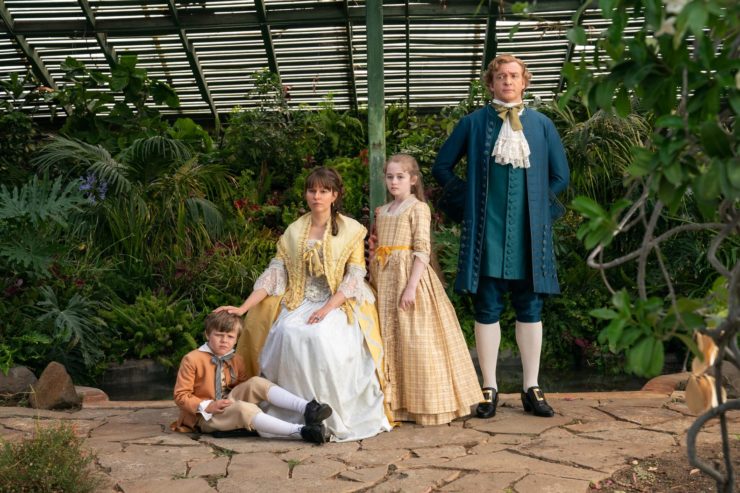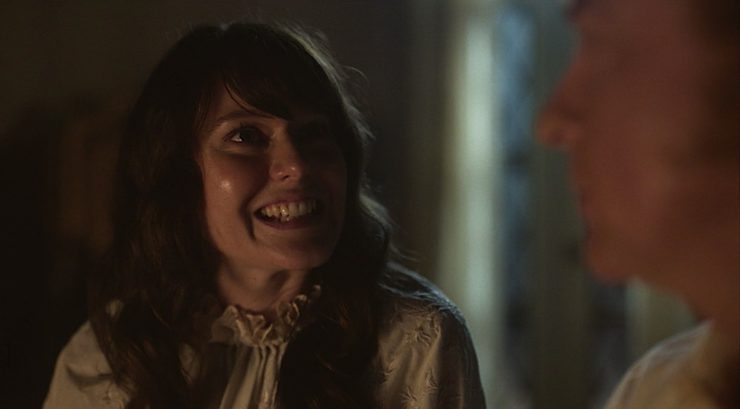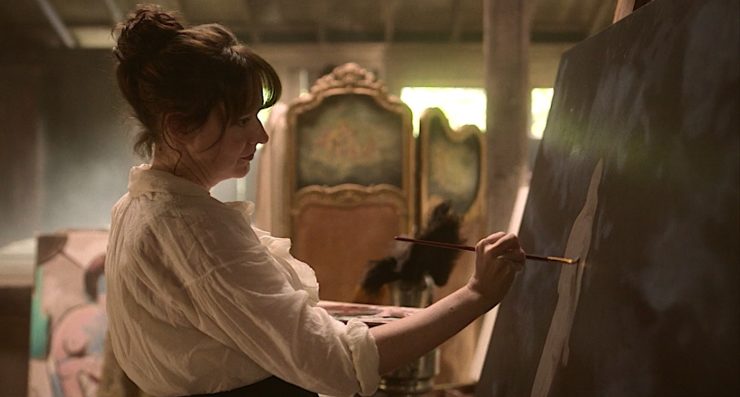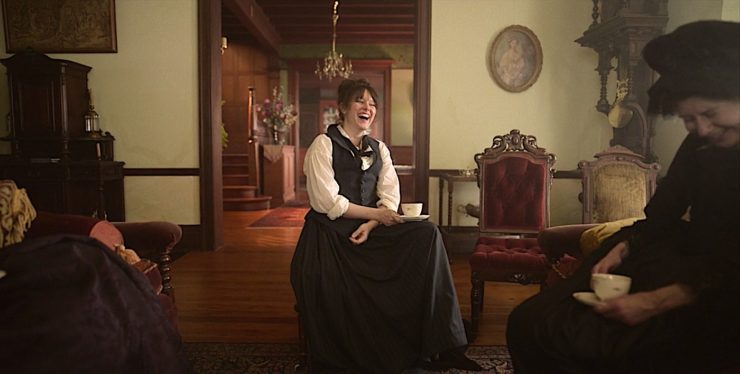Welcome to Close Reads! In this series, Leah Schnelbach and guest authors dig into the tiny, weird moments of pop culture—from books to theme songs to viral internet hits—that have burrowed into our minds, found rent-stabilized apartments, started community gardens, and refused to be forced out by corporate interests. This time out, Maya Gittelman looks at the lives of two widows—one the protagonist of a classic story by Kate Chopin, the other…Mary Bonnet.
“Free! Body and soul free!”
So whispers Mrs. Mallard in Kate Chopin’s 1894 very short “The Story of An Hour” upon the revelation of her husband’s sudden death. Grief and shock come first. And then the fact of it sets in. The way the world has cracked open. As a widow, she at last has the right to her own life. She did her duty of wifehood, no one can fault her for the freedom that comes next:
There would be no one to live for during those coming years; she would live for herself. There would be no powerful will bending hers in that blind persistence with which men and women believe they have a right to impose a private will upon a fellow-creature.
[…]
Her fancy was running riot along those days ahead of her. Spring days, and summer days, and all sorts of days that would be her own. She breathed a quick prayer that life might be long. It was only yesterday she had thought with a shudder that life might be long.
And then, in a twist, it turns out Mr. Mallard is alive after all. Upon hearing this news, Mrs. Mallard drops dead herself. The story names it as “the joy that kills,” misattributing her death to overwhelming happiness that her husband survived, while the reader is left with the grim understanding that her heart gave out because the life she imagined for herself in that brief window of freedom was gone for good. She can’t return to the life of his wife, not after envisioning who she might be without him. It’s him or it’s her.
It’s a vicious circumstance, Chopin biting into the truth of how white colonialist patriarchy manifested at its very source. How deadening, how constricting married life was for Mrs. Mallard. Even for a wealthy white woman of her class, that glimpse of freedom highlighted in sharp relief the confines of her gilded cage.
This could have been Mary Bonnet’s story.

It nearly was, in the sense that Mary did come to the conclusion it’s him or it’s me, and then almost killed him. Thankfully, she only throws up her tea instead of suddenly dying when she sees him, but the parallel is there. By the time we get Mary’s story in the season finale, “Wherever You Go, There You Are,” the viewers have come to sympathize with Stede Bonnet. But he was never a good husband. In the words of Mary’s tongue-in-cheek elegy, he was “stubborn, hard-headed, really quite irritating at times.” He seems to have been only occasionally a decent father. He never tried to meet Mary where she was, he abandoned his family only to crash back in and selfishly center himself in a life he never wanted. Mary never knew why, didn’t understand the homophobic, patriarchal trauma he’d internalized, knew nothing of his ensuing guilt and his grief and the heartache he hadn’t yet let himself name. She couldn’t have known, because he never told her. All she knew is that he made her life unlivable. All the more so upon his return, especially because she actually got to experience herself as the Widow Bonnet, and as Mrs. Mallard had only imagined, it is indeed the happiest Mary has ever been. Mary wants to keep the freedom she’s gained as a widow. To spend her days making a name for herself in the act of creation she likes best, with the love of a good man who appreciates her deeply.
So when Stede gets back—it’s him or it’s her. And it’s not about to be her.
It would’ve been so easy to make Mary Bonnet a flat antagonist. But Our Flag Means Death, as I mentioned in my tribute to its deeply intentional storytelling, seems determined to give us as much queer catharsis as possible. It’s so much more impactful to make Mary a full, decent, complicated person with wants and frustrations of her own, who tried to make it work. It strengthens first and foremost her character, but also Stede’s, and the central storyline itself. It’s not that Stede doesn’t like her because of who she is as a person or even simply because she’s a woman, they are fundamentally incompatible as partners. They have different desires, different interests, different visions for their lives. (She hates the ocean!) Stede’s wife ends up teaching him what it means to fall in love, just not by doing it with him herself. That desperately cathartic montage, vindicating that yes, we were watching Ed and Stede fall for each other all along—another show would’ve left the parallel for the fans to fill in, but this one makes it a point of building it into the story. And every part of Stede that Mary hated, Ed is uniquely suited to love.
In this way we get this marvelous storyline that centers both of them. Mary and Stede become accomplices to each other’s pursuit of love and self-love outside the limitations of their society. Two people, both of significant privilege yet trapped within its strictures, work together in a magnificent fuckery to free themselves and each other.

This show is full of quiet, deeply transformative revolutions. It makes a point of imagining how we can care for each other, even and perhaps especially when we don’t quite deserve it. Mary and Stede hurt each other because they were forced to seek in their marriage what neither was able to provide. “The Story of An Hour” is often taught with a sense of Chopin’s grim revelation, laying out just how untenable marriage could be for the women of her world, how choiceless their lives. Our Flag Means Death imagines a beautifully subversive, reclamatory alternative.
Unlike Chopin’s story, in which freedom is presented as antithetical to love—at least, the only “love” available in Mrs. Mallard’s world—both Mary and Stede find, within love, freedom itself.
Mary Bonnet’s story encapsulates the heart of Our Flag Means Death, balancing the potential for real violence with ridiculous humor and intentional joy. The finale and the show itself would feel very different if Mary was even a little less understanding, less ambitious in the pursuit of her own satisfaction. I am so grateful for this deliberate subversion. Stede Bonnet was a terrible husband, but he wasn’t able to be the man he truly was within that marriage. He doesn’t have to die to stop being the villain in Mary’s story—neither of them has to be the other’s villain. They do away with “it’s him or it’s her.” They both get to live in this one. And I mean really, truly live.
Doug would’ve been another easy villain, but as Stede says, he’s actually wonderful. The real villain here is the heteronormative, classist, patriarchal system that Our Flag Means Death is always challenging. And outside of that system, life can hold so much more reckless, marmalade-sweet possibility than they were raised to believe.
Mary gets to use the newfound community she gained as a widow to be with someone who appreciates her art at last, who not only understands it but encourages her, someone who paints too. And she’s able to pursue her craft, raise her children, fuck with passion, and generally spend her time exactly as she likes best.

Stede gets to use the skills Ed taught him to craft a fuckery spectacular enough to get back to him. He leaves behind all the trappings of the “Gentleman Pirate,” his wealth and finery. His father once told him only peasants marry for love, and Stede Bonnet is ready to leave behind everything in his past life in pursuit of just that. Covered in blood in that carriage, rowing out to sea, parallels to when he was a terrified, helpless child. A reclamation, now—an intentional choice. He wrecks his own flowers this time, smears his own face with blood. Row, baby Bonnet, row. Not away from pain, like he’s always done, but toward possibility.
Free. Body and soul, at last, free.
This is what hope can look like. This is what love can look like. Because it is love between them, is the beautiful thing, mired as it had been in resentment. Not romance, but accompliceship. It’s love that lets Mary embrace Stede with real affection for the very first time, now that he understands himself enough to be honest with her. And it’s love, their respective romantic loves, that inspires them to fight together for lives they can enjoy apart.
“The joy that kills,” reimagined. Mary and Stede have seen the possibilities “running riot along the days ahead,” and they’re willing to kill Stede Bonnet to grant them that freedom. By faking Stede’s death, both of them get to be born anew.
Long may they roam.
Maya Gittelman is a queer Fil-Am and Jewish writer and poet. They have a short story forthcoming in the YA anthology Night of the Living Queers (Wednesday Books, 2023). She works in independent publishing, and is currently at work on a novel. Find them on Twitter (@mayagittelman) or Instagram (@bookshelfbymaya).










